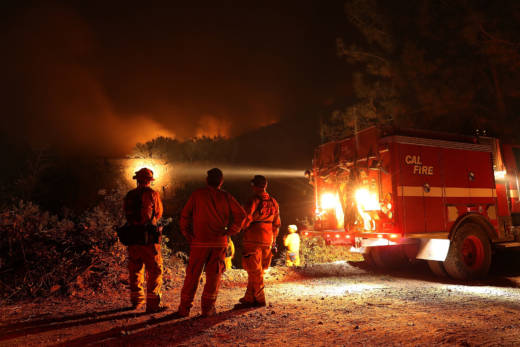As the blazes we now know as the Mendocino Complex roared to life last month, Santa Clara County firefighters sent to the scene found themselves facing an unexpected obstacle: Verizon, their internet service provider, imposed a drastic limit on data speeds to and from their crucial mobile command center.
The data “throttling,” first reported Tuesday by the technology news site Ars Technica, forced Santa Clara County Fire Department firefighters to negotiate with Verizon for higher internet speeds while they tried to perform their intended function as a communications hub for incident commanders.
Verizon acknowledges that it limited data speeds to the command center, which was deployed to help fire commanders assign, track and communicate with firefighting forces. The company blames the issue on a “mistake” in communicating with the Fire Department and says full-speed access should have been restored because the agency was responding to an emergency.
The throttling came to light in a declaration filed last Friday by Santa Clara County Fire Chief Anthony Bowden, written in support of a lawsuit seeking to restore internet neutrality rules repealed last year by the Federal Communications Commission.
Bowden wrote that Verizon’s throttling “has had a significant impact on our ability to provide emergency services. Verizon imposed these limitations despite being informed that throttling was actively impeding County Fire’s ability to provide crisis-response and essential emergency services.”
